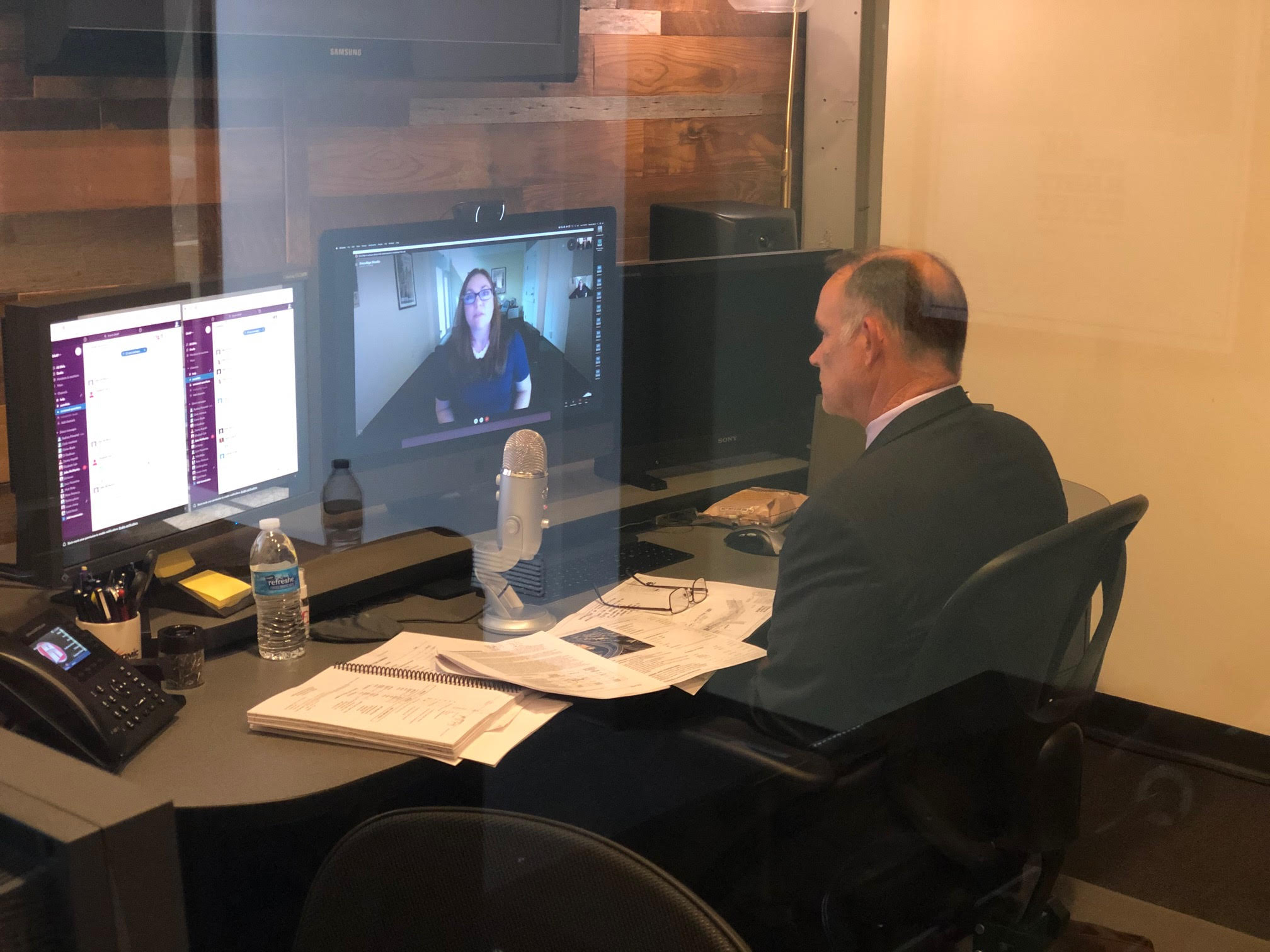
We’ll do it Live! Atomic Produces Live Streaming Project
If the video production business has taught the Atomic Productions team anything over the past 20 years, it’s that the learning never stops. The past 11 months put that lesson into overdrive, especially as companies and public agencies looked for a way to engage and inform through video.
More and more, clients are turning to live video streaming as a way to communicate, a type of project that returns the Atomic team to its roots as live TV broadcast producers.
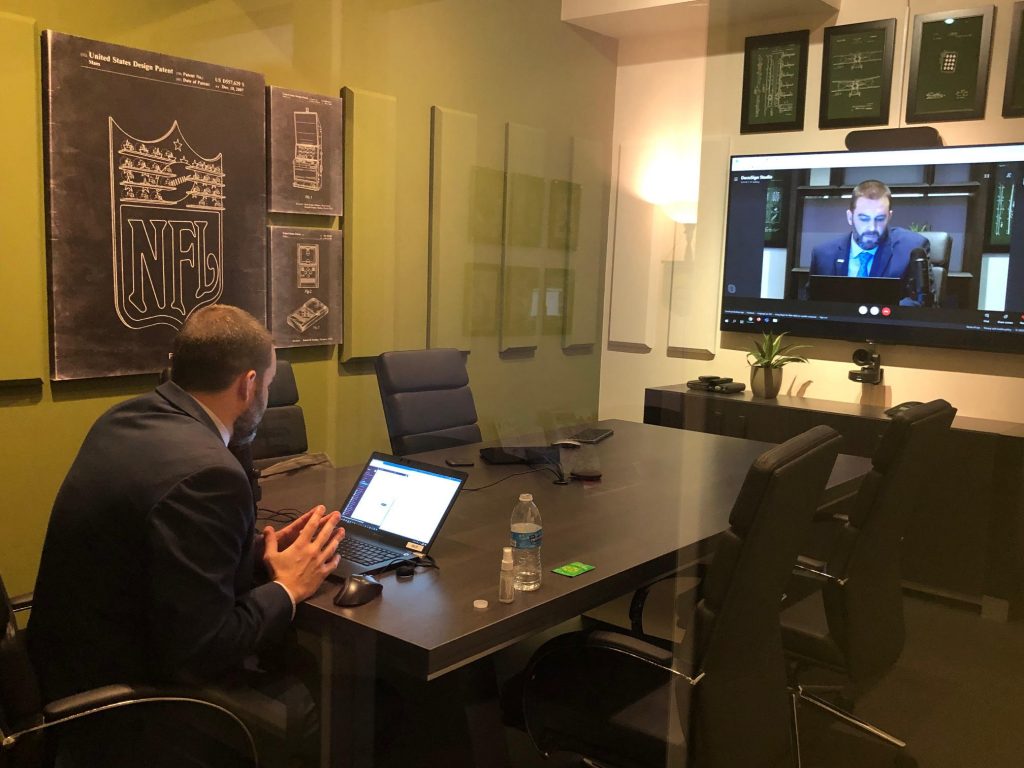
“We’ve always been one of those companies that dive into anything,” says Executive Producer Danny Angotti. “We love the thrill of doing live productions and delivering something great. We never considered ourselves a streaming company; it was something we left to others, but you have to change with the times, and when the pandemic hit, suddenly we saw ourselves doing dozens of live streams just in the past year alone.
Live Streaming for Public Agencies
Atomic got a call from Convey, a local communications firm that works with many public agencies, to produce a live stream Public Hearing for the California Department of Transportation covering the Oakland Alameda Access Project. This project is designed to improve access along I-880 to the Posey and Webster Tubes, Oakland downtown neighborhoods, and the City of Alameda.
During non-pandemic times, a hearing like this would occur in a County office with engineers, project managers, and company representatives supplying updates and answering questions in person. A meeting like that isn’t possible these days.
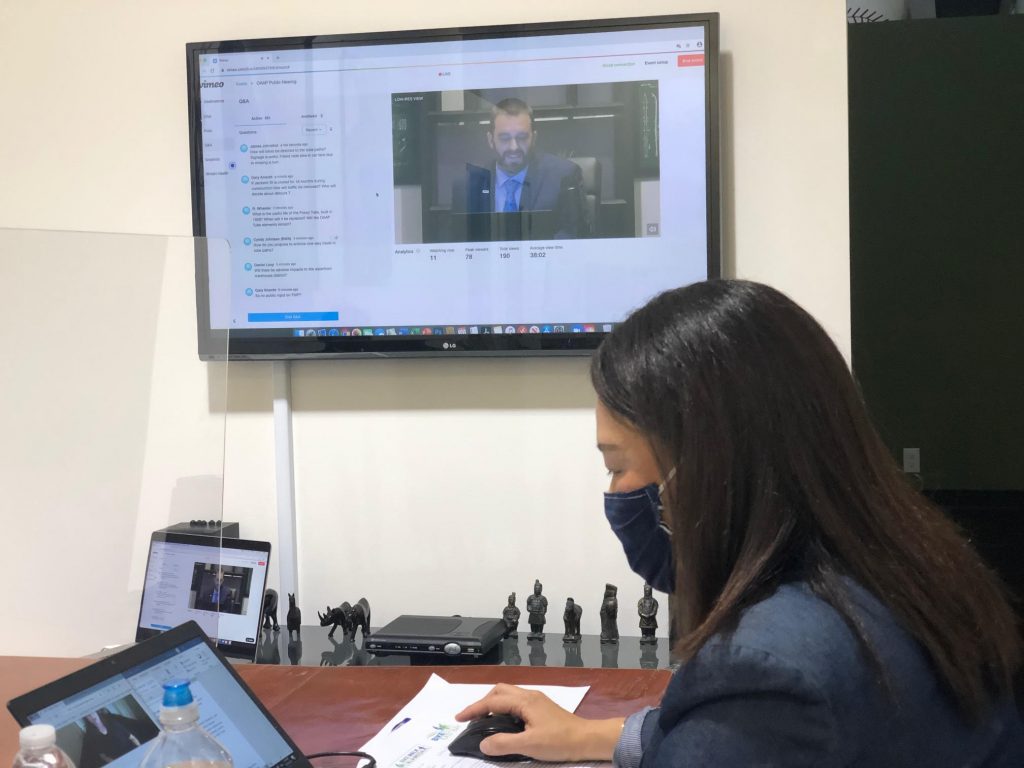
“We have space at our offices in Emeryville for all of the people that needed to be on camera, the translators, and the production team,” reports Senior Producer Matt Ruby. “It made sense to host everyone here, mainly because we could control Internet availability and high-quality video output. Everyone jumped on the idea.”
Proofing the Infrastructure
As you would expect from a leading video production house, Atomic boasts top-notch camera equipment, leading-edge computers, and fiber-speed Internet access.
“We actually have two fiber-speed Internet lines,” Danny interjects.
That said, the inherent technological demands of a project like this meant that Atomic needed to put the facility through a rigorous stress test to ensure a seamless live stream.
Atomic had not hosted a live production to this scale before. “We assumed there would be a dozen or so computers wired into the Internet,” explains Danny. “We knew we’d have five HD cameras trained on the engineers and that there would be communication between the onsite team and citizens who had questions for the Caltrans team.”
So, the Saturday before the event, the Atomic crew showed up to try to break the facility.
“We turned everything on, ran as much data as we could through the fiber service, made calls, sent messages, and anything else we could think of,” Danny recalls. “Then we turned off the main Internet service to make sure the secondary service picked up. It worked like a charm.”
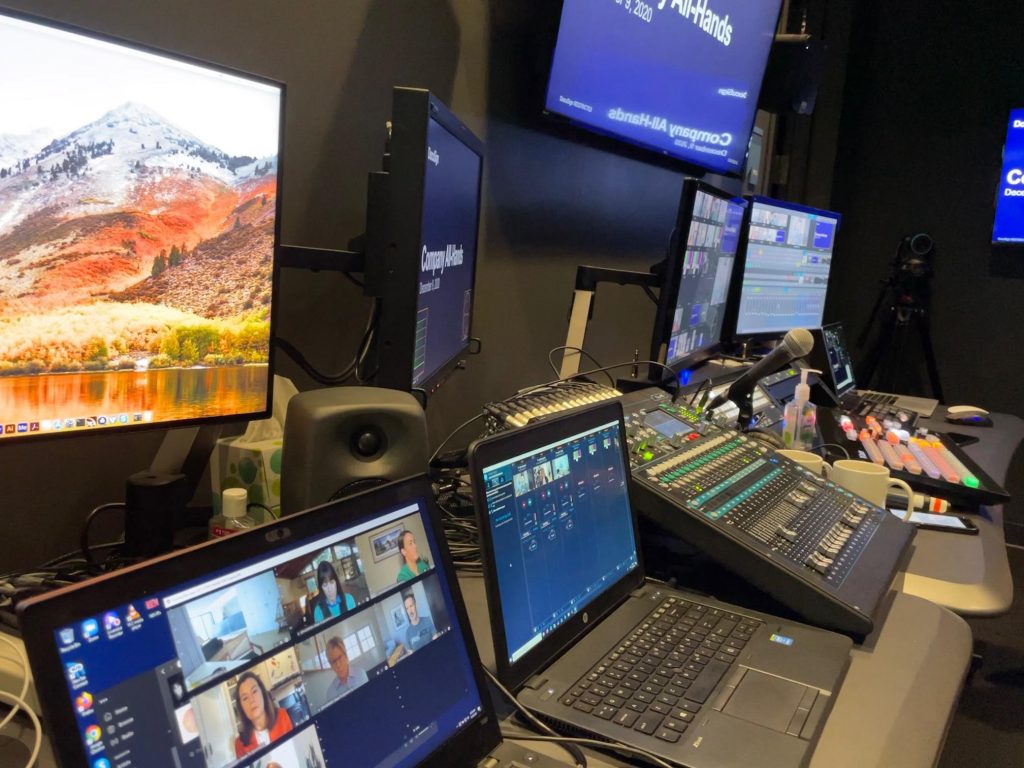
Preproduction and Prerecording
A project like this includes dozens of moving pieces, mostly since up to 20 people worked at the studio and countless hundreds watching from home.
“We wanted to record as much of the presentation as possible before the live event to help alleviate some of our worries,” Matt explains. “But it turns out the messaging was changing up to when we went live, so we couldn’t record as much as we wanted.
“We did have one presenter record his piece from home via Zoom, but then he had to come into the office to re-record part of his presentation. It didn’t sound like the same person,” Ruby continues. “So, we had to send out the audio to an audio engineer we know to make it sound worse. Never thought we’d have to do something like that!”
As a general rule, Matt believes that pre-recording as much as possible makes for a better product. “We can maintain the illusion of a show being live, but there’s absolutely no reason why we need to ‘live’ in most situations,” he says. “Obviously, on this one, we had a Q&A session, but things can go sideways ten different ways, and recording what we can remove that issue. The audience would never know the difference.”
On this project, Atomic, Convey, and the crew from Caltrans rehearsed a couple of days before the hearing to test the system again and to get the non-showbiz folks comfortable in front of a camera.
Day of Show
The plan called for putting each Caltrans person in an edit suite so they’d have a socially distanced space and a controllable audio/video environment. For people asking questions in Chinese, Vietnamese, and Spanish, translators were in Atomic’s studio, socially distanced at separate desks with laptops. Project managers from Convey and their client were at a long table in Atomic’s break room, separated by plexiglass and as far away from each other as possible.
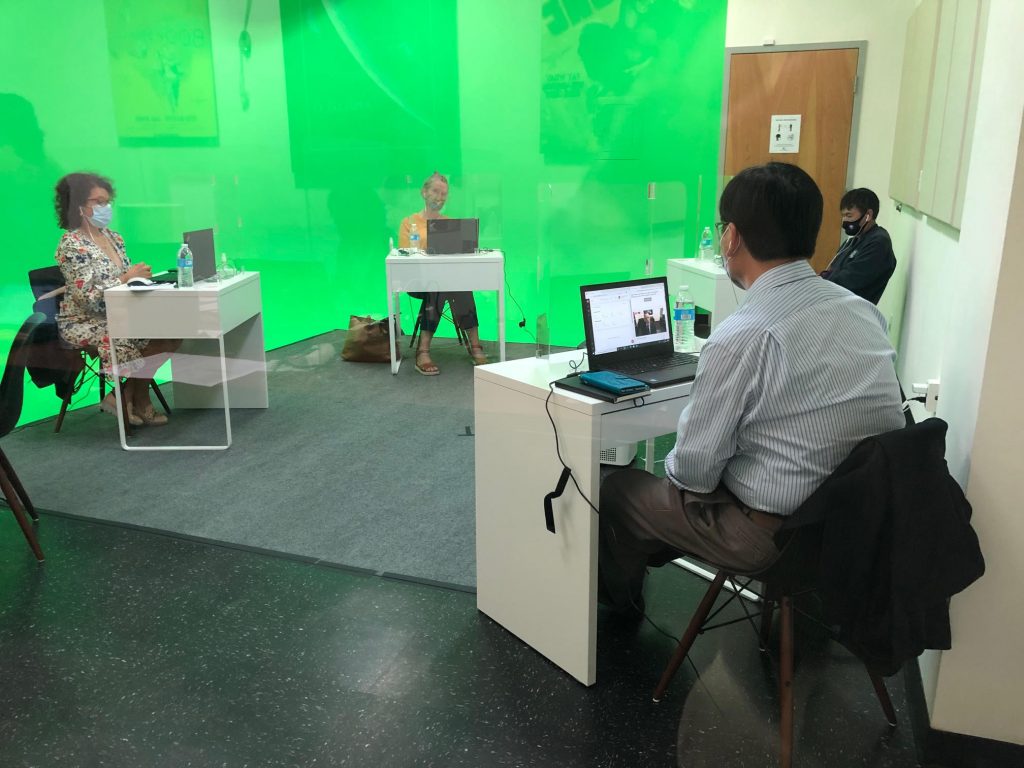
“We also had some nice Atomic-branded hand sanitizer for them and lots of wipes and extra masks,” says Ruby.
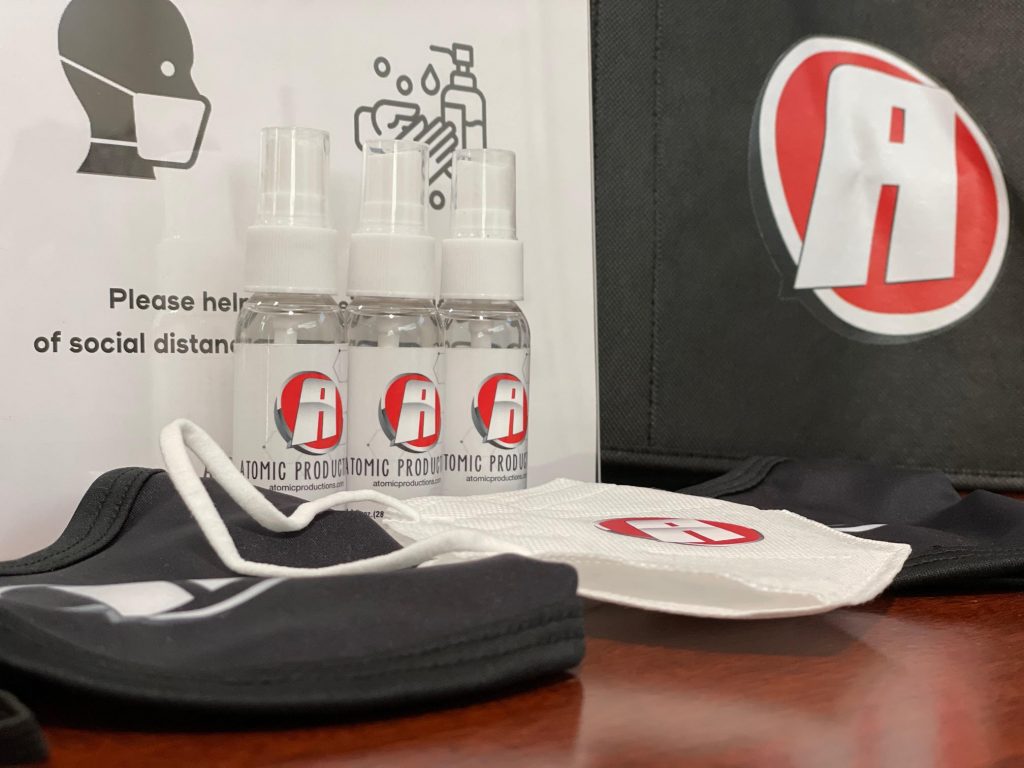
“It went out without a hitch,” Danny reports. “We set up the engineers in our edit suites, the translators at desks in our studio behind plexiglass, and everyone else socially distanced around a large table with plexiglass separators.”
Atomic pushed the stream to a dedicated website via Vimeo. Engineers, staffers, and production crew communicated using Slack.
“Even with the changes and just the pressure of something like this, everyone left happy,” Matt adds. “That’s what we’re after, no matter if it’s a live stream like this or a full-blown corporate video.”
The Future
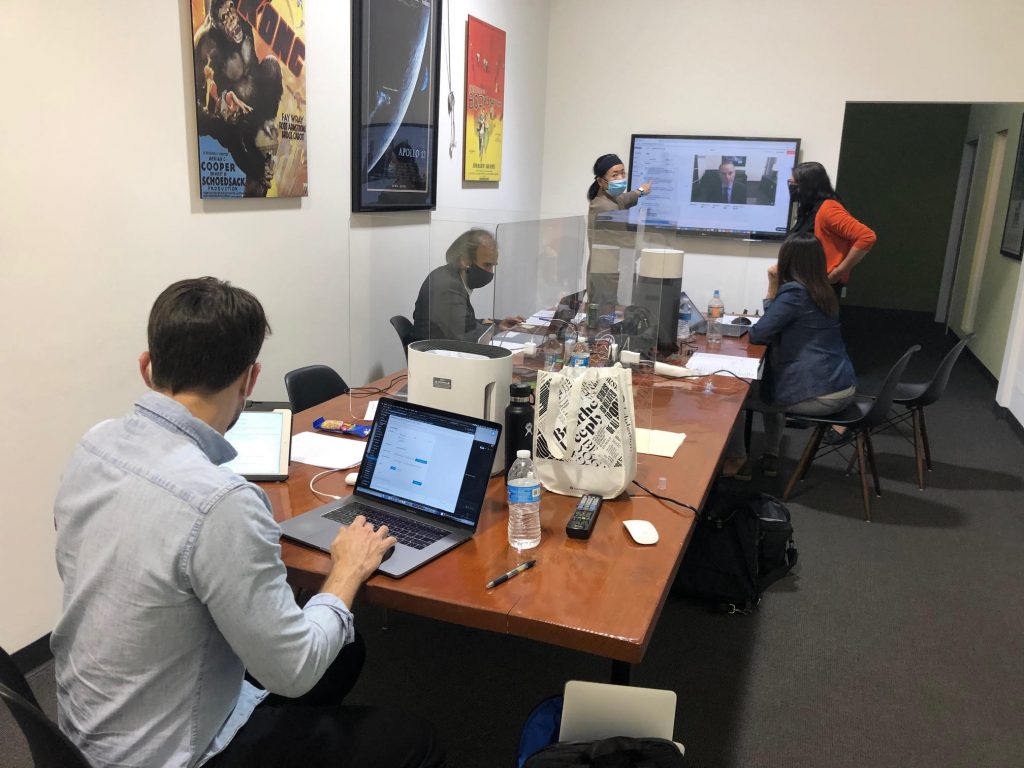
“What’s odd is that these types of projects are now the norm,” says Ruby, “but we’re asking people that don’t have any production experience to become on-camera talent and video professionals overnight. It makes it that much more important that they work with an experienced production company or partners that they can trust to pull it off. It’s fascinating, and it’s the future.”

